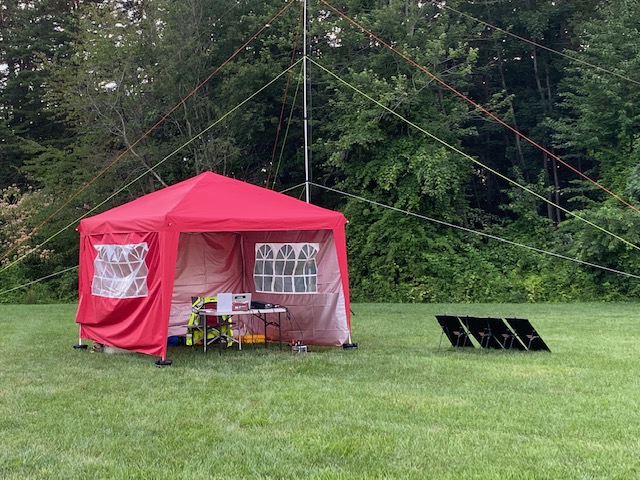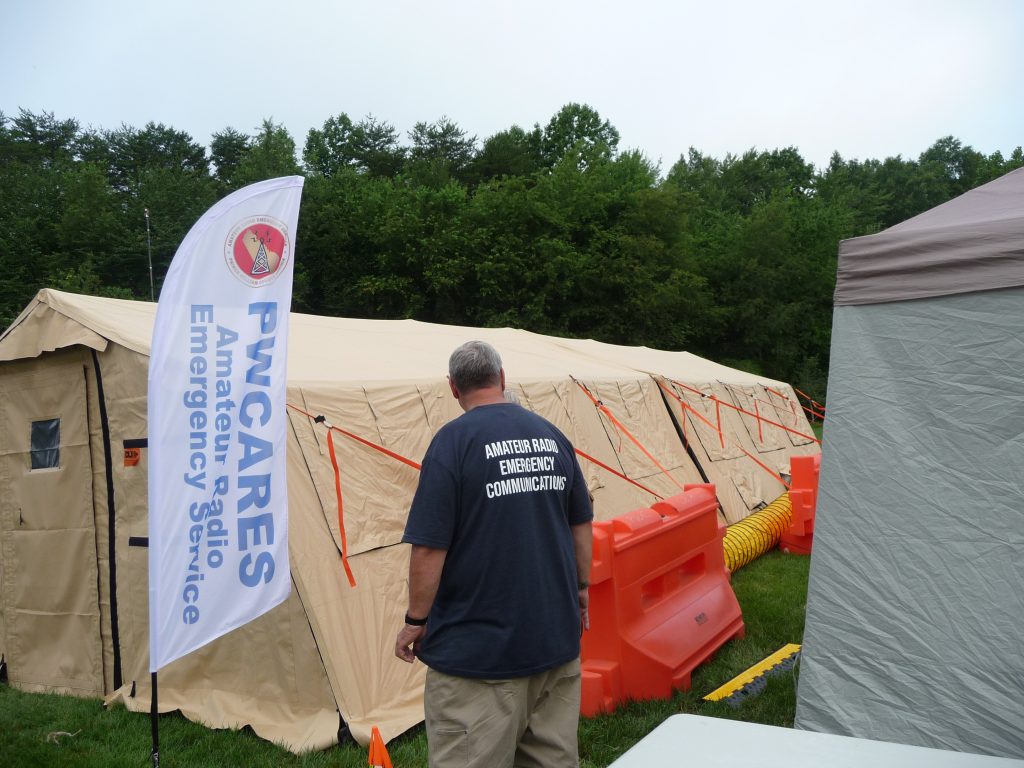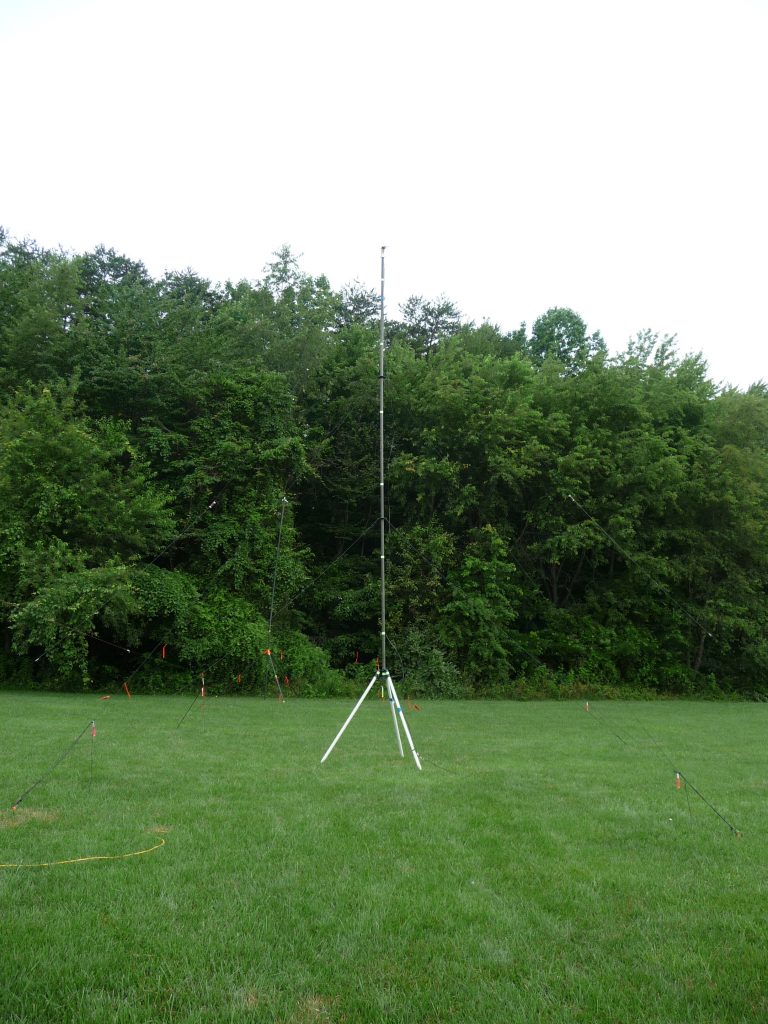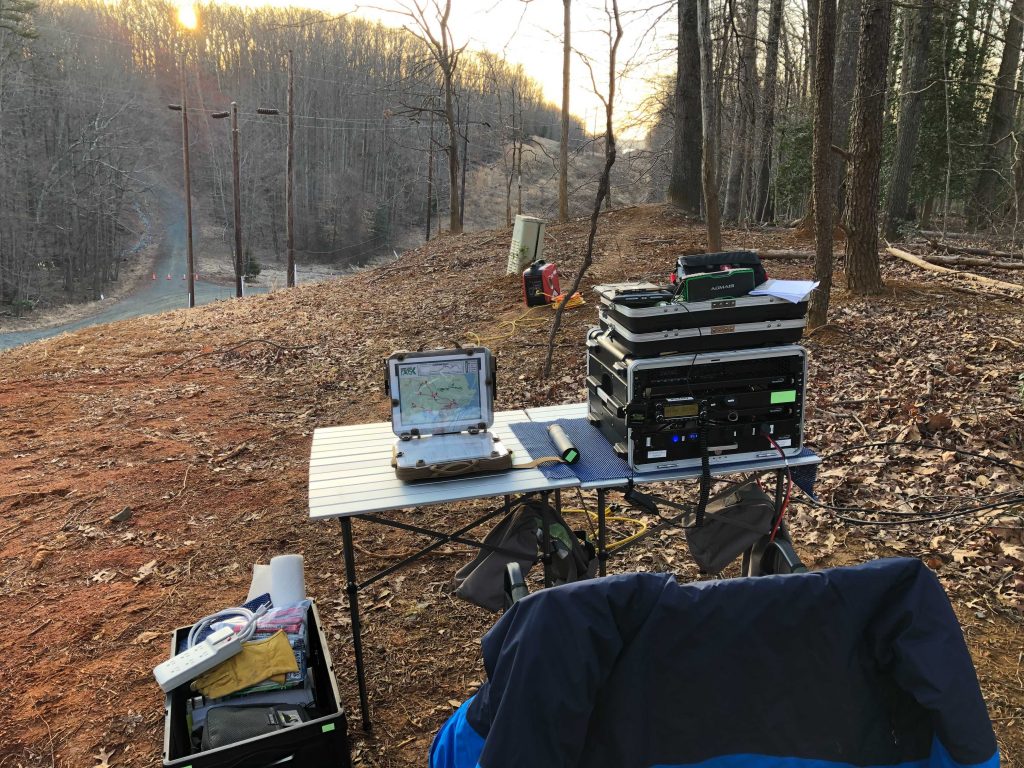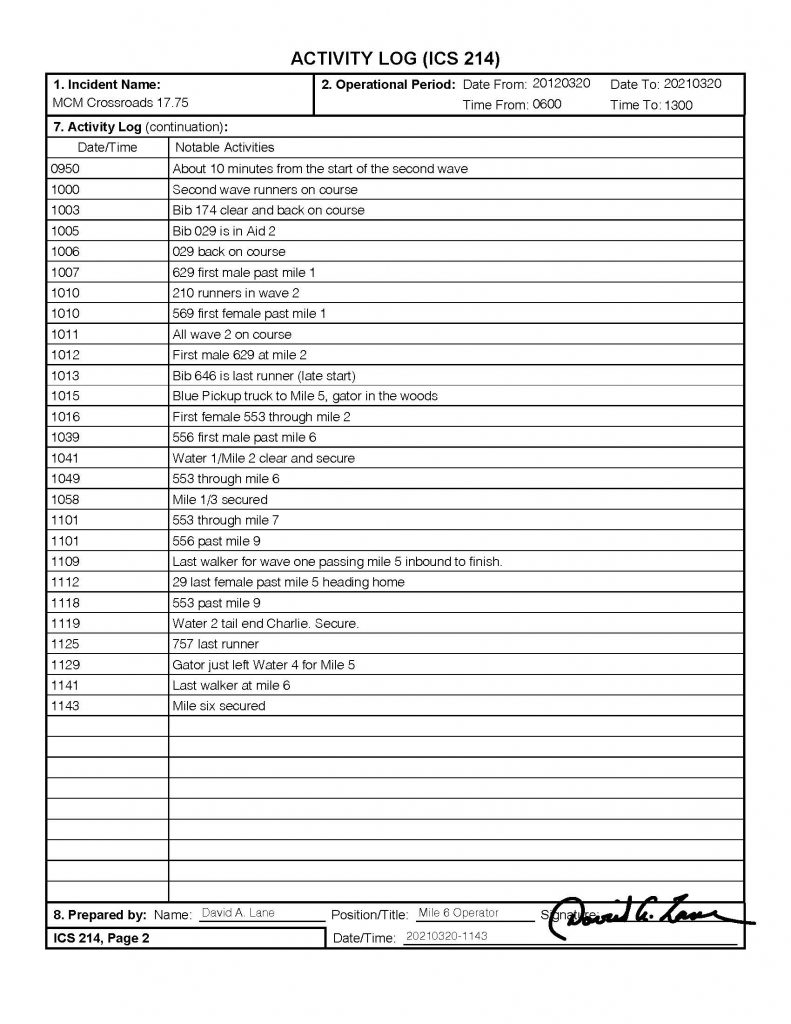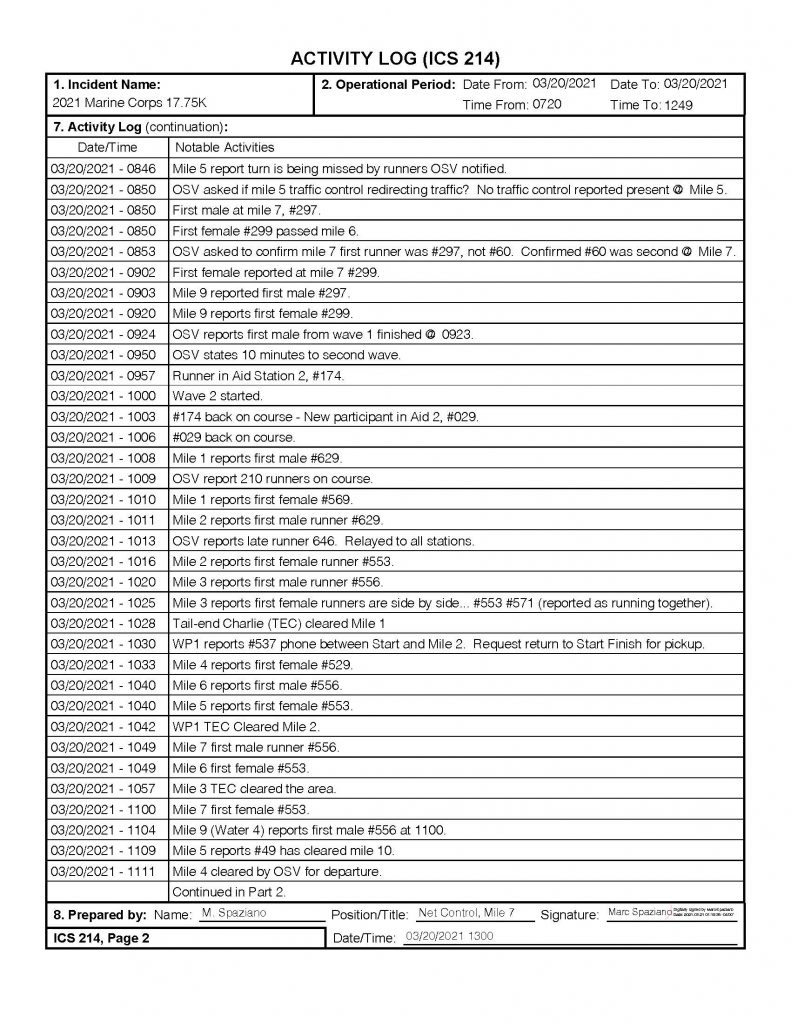I was appointed the Emergency Coordinator of the Prince William County ARES® in April of 2001.
In April of 2001, we still had the Twin Towers in New York. Bush II was President by Supreme Court decision (who can forget the dangling chad?), and ARES® as an organization was still doing fun runs and other charity walks because cell phone coverage was spotty at best. I took over from Erv (and I cannot even remember his last name or call sign – anyone, anyone?). Steve Frick, N4OGR (SK), was the assistant, and we were working through the Great Unpleasantness which we would eventually come out the other side, mostly unscathed.
And then, September 11 happened.
Suddenly Amateur Radio and ARES® were a thing. I spent the day in the driveway of my house, with two HTs in my hand and my daughter rolling a jiggle ball back and forth on the lawn. I did not do much because I did not even know where the EOC was, much less what we needed to do there. I would later spend the week coordinating Amateurs heading to help at the Pentagon, myself included. Shortly after that, the head of the communications unit, Captain Fred Miller, called me into a meeting. He had only one question – would I enter into a Memorandum of Understanding with Prince William County. Of course, I said yes. We spend a couple of weeks going back and forth on the essential items, but the MOU was signed. The cadre evolved to become PWCARES. We stood up a website, an email list (reflector) and started recruiting. I appointed my Assistants appropriately. Two from Woodbridge, two from OVH, and two at large. And then work began.
We have participated in County exercises, City deployments, Hospital exercises, emergencies (floods and hurricanes), supported the Marine Corps Marathon Office events, 24-hour runs, bike races, and numerous walks.
In 2011, at the request of Manassas City, we mobilized seventy-seven amateurs from the National Capital Area over five days to support the city at five sites from sun up to sundown, supporting the 150th anniversary of the Battle of Bull Run (Manassas). We fed them, looked after their dogs (Emma loved it), and made sure that the messages got through despite incredible summer heat and rotten sandwiches (that the Red Cross provided – we served brisket that day). Volunteer Prince William wanted to crash the party. See our challenge coin page for more details.
We figured out how to get a signal out of a school, set up multiple Field Day events, and establish ourselves as Amateurs’ training ground in Northern Virginia. We practiced message sending on voice, digital, HF, VHF, eieio. We have adopted Incident Command System forms, processes, and procedures. Many of us have more FEMA certifications than active FEMA employees.
And we continue to grow.
I would be remiss if I did not thank my wife, Dianne, KI4FVV, and Hurricane Emma for their support. I would also like to say thank you to my Assistants, who have supported me or told me to sit down. A special thank you to Keith, KM4AA, who explicitly told me to go to bed (after 36 hours of operation during Hurricane/TS Isabel), and Trisha, KI4PCM. She noticed that hypothermia had set in during the inaugural 24-hour run.
My thanks to the PWCARES cadre that has followed my lead over the last twenty years challenged my assumptions and shown how an ARES® cadre can operate. While I do not expect to do this job for another twenty years, I look forward to at least the next five. Unless someone wants to step up and take over for me. Anyone? Anyone?
A Brief History of PWCARES
Who do we support
- Prince William County (MOU 2003, MOU 2016)
- Service Authority (MOU 2018)
- City of Manassas
- City of Manassas Park
- Volunteer Organizations Active In Disasters (VOAD), Prince William Volunteer Action Centre
- Community Emergency Response Team (Manassas/Manassas Park)
- Marine Corps Marathon Program Office
- Red Cross (National Capital Region)
- Salvation Army
Our Qualifications
- FCC Licensed Amateur Radio Operators (all levels)
- National Incident Management Courses:
- 100 (Introduction to the Incident Command System)
- 200 (Basic Incident Management Command System)
- 700 (Introduction to National Incident Management System)
- 800 (Introduction to the National Response Framework)
- 300 (Intermediate ICS – select individuals)
- 400 (Advanced ICS – Select individuals)
What have we done?
- April 2001: David, KG4GIY appointed permanent Emergency Coordinator
- September 2001: Terror Attacks on the Pentagon, Twin Towers.
Welcome to the Post-September 11 world of Emergency Preparedness and the new Amateur Radio Emergency Service
- 1 July 2003: Prince William County ARES signs an MOU with Prince William County
To define the relationship between the Prince William County Office of Emergency Services (OES), Amateur Radio Emergency Service (ARES), and Radio Amateur Civil Emergency Service (RACES).
To establish a framework of cooperation and a close working relationship with volunteer licensed amateur radio operators organized under the authority of the ARRL ARES program and the Prince William County of Emergency Services (OES).
- September 2003: PWCARES deploys in support of Hurricane Isabel
- October 2003: Regional SET with Maryland
- 2004: First action plan and quick reference guides published
- 2004: National Capital ARES Council begin informal meetings
- May 2004: First formal support of Dulles Disaster Drill
- 2005: First regular meetings of the PWCARES cadre at the EOC
- March 2006: Patriot Challenge Regional Exercise
- April 2006: First support of the 24 Hour Ultra-Marathon
- April2007: Vertex Regional Exercise
- May2007: Dulles Drill
- June 2008: PWCARES 3F Field Day
- March 2009: Where’s Waldo Cadre’s first in-house drill simulating tracking the Strategic National Stockpile deployment.
- May 2010: Dulles Drill
- June 2011: CW150 support with Manassas City
- 2012: Update to the EOP. PWCARES role expands to more than ESF2 support
- March 2013: Cadre Exercise Abominable Snowmageddon
- 2015: Support of Marine Corps Marathon Program Office starts
- June 2016: PWCARES participates in VaNG United Resolve Exercise
- June 2018: PWCARES 3F Second Field Day
- June 2019: Three exercises in 7 days. A new record
- June 2019: Third Field Day (is this a new trend?)
- March 2020: Lock-down for COVID-19 begins
- March 2021: MCMO Events return
- June 2021: PWCARES 5F Field Day in-person
